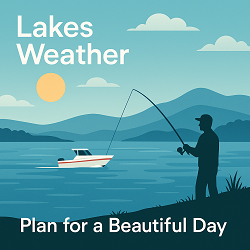Montrose, CO Weather Forecast and Current Conditions (81401)
Current Conditions From Nearby Local Station

Feels Like 58°F
at
Current Conditions From Nearby Local Station

Feels Like 58°F
at
Point Forecast at a Glance







7-Day Temperature Trend
Week Ahead Summary
High temperatures remain relatively stable through the week, ranging from 59°F to 68°F. Dry weather expected throughout the week.
Climate Context
This week's forecast shows temperatures running 9°F above the historical average for October-November. Normal highs for this period are around 55°F with lows around 27°F.
This Date in Weather History
1846 - Eighty-seven pioneers were trapped by early snows in the Sierra Nevada Mountains that piled five feet deep, with 30 to 40 foot drifts. Just 47 persons survived the "Donner Pass Tragedy".
More on this and other weather history
Montrose 7 Day Weather Forecast Details
Friday Oct 31

Day: Sunny, with a high near 59. Northwest wind around 5 mph.

Night: Mostly clear, with a low around 32. South wind around 5 mph.
Saturday Nov 1

Day: Sunny, with a high near 61. West southwest wind 0 to 5 mph.

Night: Mostly clear, with a low around 37. East southeast wind 0 to 5 mph.
Sunday Nov 2

Day: Sunny, with a high near 67. North northeast wind 0 to 5 mph.

Night: Mostly clear, with a low around 38.
Monday Nov 3

Day: Mostly sunny, with a high near 68.

Night: Partly cloudy, with a low around 38.
Tuesday Nov 4

Day: Sunny, with a high near 66.

Night: Mostly clear, with a low around 36.
Wednesday Nov 5

Day: Sunny, with a high near 65.

Night: Partly cloudy, with a low around 38.
Thursday Nov 6

Day: Mostly sunny, with a high near 59.

Night: Mostly clear, with a low around 32.
Sun & Moon Monthly
Sunrise 7:38 AM
Sunset 6:14 PM
Last Light 6:41 PM
Moonset 1:49 AM

Contiguous United States Extremes
Thu's High Temperature
98 at 2 Miles West Of Pala, CA and 6 Miles West-southwest Of Glamis, CA
Fri's Low Temperature
4 at Peter Sinks, UT
Weather Folklore
If a dog pulls his feet up high while walking, a change in the weather is coming.
Current subscribers - login to your ClearSky account
About Montrose, Colorado
Montrose is a home rule municipality that is the county seat of and the most populous municipality in Montrose County, Colorado, United States. The city population was 20,291 at the 2020 census, within a total area of 18.5 square miles. The main road that leads in and out of Montrose is U.S. Highway 50.
The city is located in western Colorado, in the Uncompahgre Valley, and is an economic, labor, and transportation waypoint for the surrounding area. Montrose is the second-largest city in western Colorado, after Grand Junction.
Content from Wikipedia, licensed under CC BY-SA 3.0.
How We Provide Better Local Weather
Current conditions: We use the nearest available station to your location - including professional MESONET/MADIS and local weather stations - often miles closer than regional airports.
Forecasts: National Weather Service point forecasts predict for your specific area, not broad regional zones, making them far more relevant to your location.

